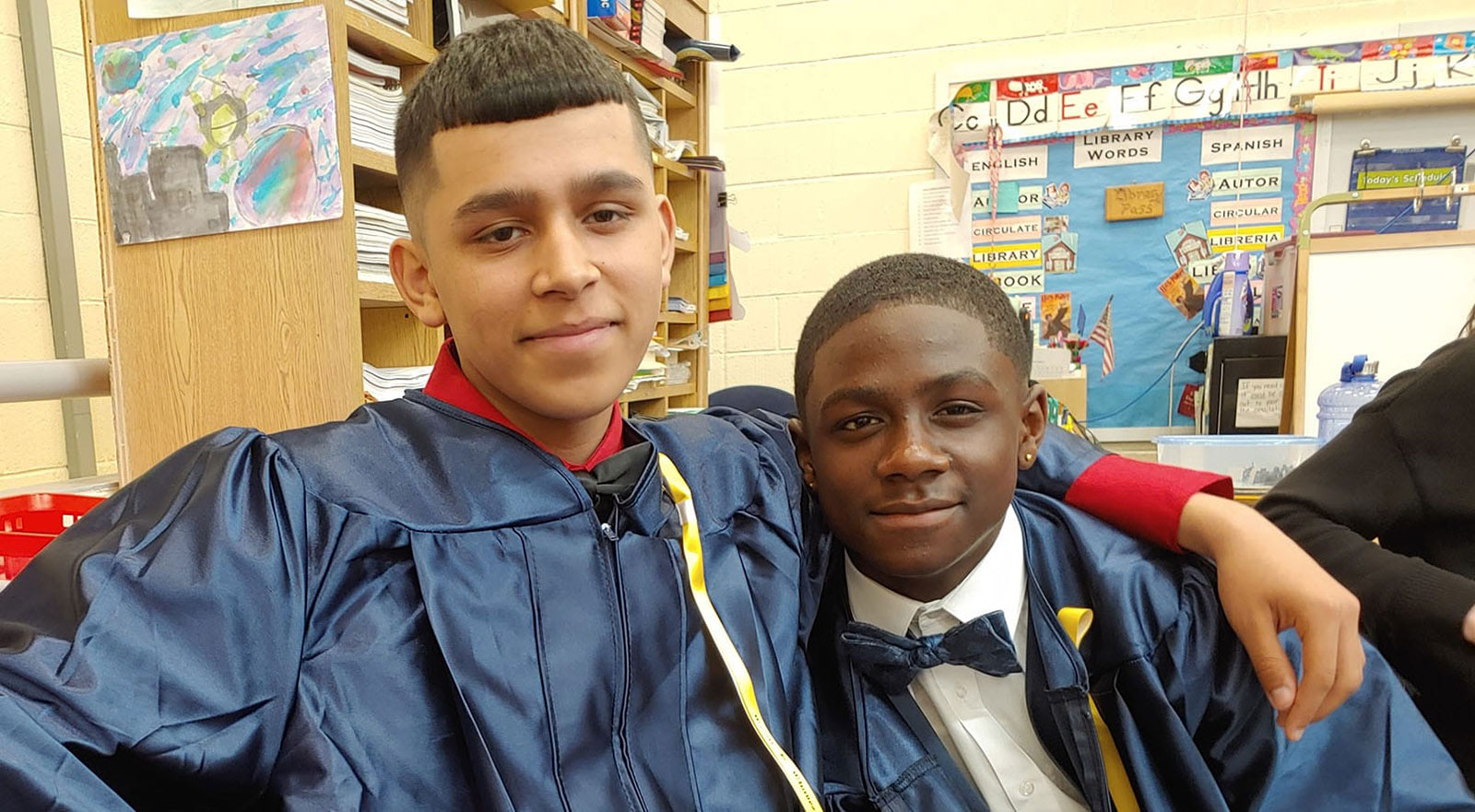Every Student Must Graduate
One question we are often asked is:
If your organization’s goal is to ensure that Chicago students graduate, why doesn’t it work exclusively in high schools?
Our answer:
Because dropping out is usually a process, not the result of a single event that happens sometime between a child’s ninth-grade and twelfth-grade year.
A student can be diverted from the path to graduation as early as Kindergarten, or it can happen during the spring of their senior year. Sometimes a traumatic event – the sudden loss of a parent’s job or a serious health problem – can impact a student’s path.
More often, dropping out is a slow-drip process. A third-grade student, for instance, might struggle in the classroom, wind up repeating the grade, and from then on, have nagging doubts about their ability to succeed. Or a middle school student might have faced repeated bullying by one of their peers and slowly, but steadily, skip more and more school days.
Principals, teachers, and other school leaders reinforce to students that they can – and must – stay focused on graduating from high school. That’s because a high school diploma, more than ever, is a differentiator in our society. Students who earn a degree enjoy much better economic, social, and health outcomes, on average, than students who drop out.
It’s not that there’s something magical in the diploma itself. It’s the ongoing learning, coping skills, socialization, and goal-setting embedded in the K-12 journey that invests graduation with such power.
Because of CIS, students are more likely to come to school, stay in school, do better academically, and ultimately, graduate, prepared for continued success. We support students through two proven programs – one that is focused on connecting resources and one that is focused on supporting individual students.
Did You Know?
On average, students who drop out of school:
- Earn 46 percent less over their lifetimes than graduates ($595,000 vs. $1.1 million).
- Have an unemployment rate 2.5 times greater than graduates (32 percent vs. 13 percent).
- Are much more likely to be incarcerated. Nationally among 18- to 34-year-old males, for example, 14.7 percent of dropouts were incarcerated in 2010 compared to 3 percent of graduates.
- Cost society an estimated $292,000 in lost tax revenues, higher cash and in-kind transfer costs, and imposed incarceration costs relative to an average high school graduate.
- Experience poorer health and morbidity outcomes compared to graduates.
Perhaps most impactful of all, children of dropouts are more likely to drop out of school than are children of graduates, perpetuating the pernicious cycle.


